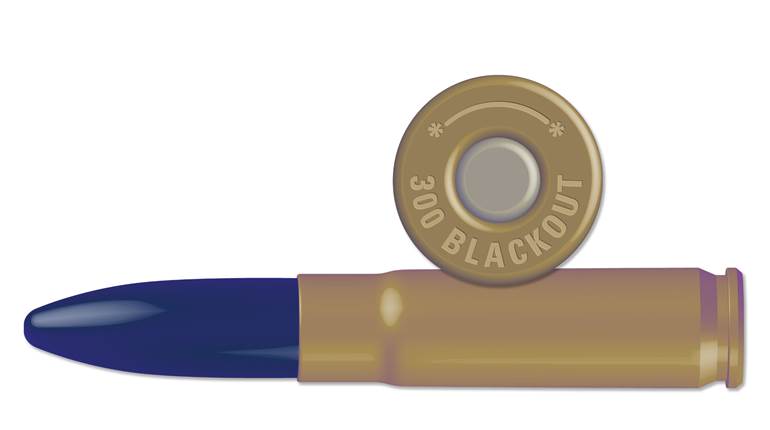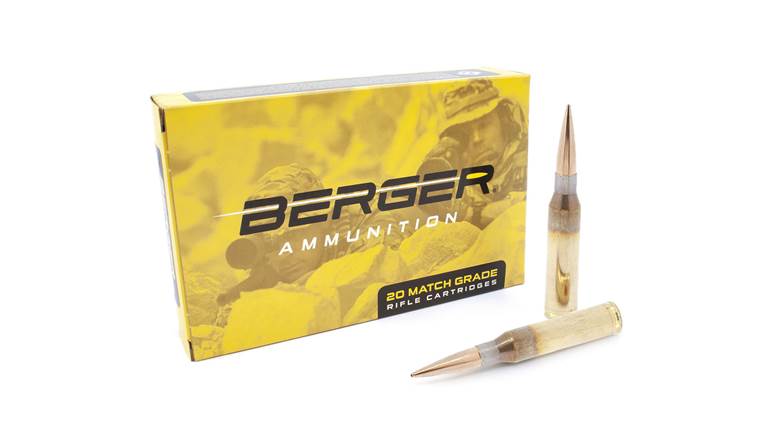
Ever since the first firearms were introduced, the notion of combining bullet, powder and priming has been highly sought after. Even before breechloaders came about, attempts were made to quicken the reloading process with repeatable, accurate charges.
The earliest cartridges were assembled in paper whereby the charge was rolled up in a sheet of thick paper and a lead ball plugged one end. At the other end, the paper was rolled and crimped shut. The shooter would bite off the closed end of the paper, dump the powder down the muzzle and seat the paper—now becoming a wad—and bullet with his ramrod. Priming powder was added and depending upon the ignition system (matchlock, wheel lock or flintlock) the firearm was discharged. This was better than four separate operations but still clumsy. Paper cartridges saw military use well up through the American Civil War and a little beyond. The introduction of Joshua Shaw’s percussion cap in 1814 sped the process up a little, but reloading remained a choke point in battles.
Some of the first breechloaders still used a paper cartridge. Major Patrick Ferguson patented one of the most well know breechloading flintlock rifles in 1776. Even here, paper cartridges ruled the day. Although the concept of a single cartridge case containing primer, powder and ball was introduced by Jean Samuel Pauly, Swiss gunsmith, in 1808, it wasn’t until 1851 when the Maynard Rifle Co. made the first commercially successful metallic cartridge case as we know them today. An intermediate step was the pinfire cartridge introduced by French gunsmith Casimir Lefaucheux in 1836. His cartridge was made of a thin metallic shell that contained the priming compound and a protruding pin that would be struck with the firearm’s hammer to initiate ingnition. This shell would seal the bore and protect the shooter from burning gases. The remainder of the case was paper, containing the powder charge and bullet. Lefaucheux incorporated this pinfire cartridge in his swivel-breech rifle introduced at about the same time. Later, Lefaucheux wiuld use an all metal case.
Another rabbit trail in the cartridge case legacy that remains with us today was the rimfire cartridge case. Invented by another French gunsmith, Louis-Nicolas Flobert, his idea was to fit a ball in the front of a percussion cap. There was no powder charge; the ball was powered solely by the primer. It was designed for indoor parlor shooting, a popular pastime of the day. Flobert’s invention spawned the line of American .22 rimfire cartridges.
The first metallic cartridge cases were made of copper, but as the demand for more power drove the market it was soon learned that copper alone would not stand up to the pressures necessary to drive larger bullets faster. Turns out brass is the best, but we will get to that in a minute. Other materials—steel, aluminum and even plastics—have been used with varying degrees of success.
Steel has been employed primarily because it is cheaper than most other metallic compounds, but it requires special machinery to produce a workable cartridge case. Steel’s primary asset was that it is usually more readily available than brass during wartime—especially to the Germans during World War II. Steel cases are most commonly used by military units from China, France, Germany and Russia. The U.S. made some steel cases during World War II, but they never were popular because the tough material was prone to rip extractors apart in semi- and full-automatic firearms. Too, because of the more expensive machinery and manufacturing techniques, steel cases are only made by Winchester in the United States, but much affordable steel cased ammunition is imported from overseas.
Aluminum was never used until alloys were developed that prevented the aluminum cases from burnout. “Burnout” is when the case is ignited from the hot burning powder gases. This can destroy the firearm and injure the shooter. Today, it is used in bargain priced handgun ammunition and as the head of shotshells. It lacks the ductility to be reloaded like a brass case.
Plastic is widely desired as a cartridge case material because of its low cost, low weight and ease of manufacture, but its use today is pretty much limited to shotshells—although it has been used for some training ammunition and “Trounds.” Again, it would have some advantages as a case material, so experiments are ongoing. The material typically does not hold up well to retention of bullets and primers; it does not spring back from the stresses of firing and most mixtures lack the heat resistance needed in modern center-fire firearms. 
Brass, specifically an alloy of 70 percent copper and 30 percent zinc, has proven to be the best material for center-fire cartridges. Relatively inexpensive and readily available, brass also draws and machines easily, it has the ability to be hardened as well as taking an annealing to soften it. Brass also has a life in that it can be resized to original specs and reloaded. The ductility of brass helps seal the breech from high-pressure gases, thus protecting the shooter from injury.
The manufacturing of brass cartridge cases is interesting to watch. See how a cartridge case is manufactured starting with a simple brass cup in this video from Starline Brass, or in this How Ammo Is Made video from NRA Publications.
There are five basic types of brass cartridge cases: belted, rebated rim, rimmed, rimless and semi-rimmed. Each uses a different point with which it headspaces in the chamber. Headspace is the distance from the breech to a point in the chamber that the case seats. Headspace is critical to both accuracy and safety. Too little headspace, and the breech usually cannot close enough to safely fire the firearm. Too much headspace, and the case may separate in the chamber and possibly injure the shooter with hot powder gases or cause a mechanical failure in the firearm.

Belted cases headspace on a belt formed near the rim of the case. It is an English invention to distinguish magnum—or high-pressure cartridges—from conventional cases. Experience has taught those of us who shoot these rounds and reload to ignore the belt and resize the case based upon the shoulder. Too often a careless chambering would allow the case to stretch to the point of separation after a very few reloads if the reloader adjusts his die to headspace on the rim. Examples of belted cases include the .300 Winchester Magnum, .338 and .458 Winchester Magnums, the .375 H&H Magnum and the Weatherby Magnum line of cartridges.


From left: .338 Win. Mag; .300 Win Mag.; .375 H&H Mag.; 9 mm; .50 AE
A rebated rim case has a rim that is smaller in diameter that the body of the case and, thusly, only serves for extraction. The idea was that a smaller rim would be relatively stronger and therefore stand up to sticky extractions. Whether or not that is true does not seem to have been researched very well. One real advantage is that more powerful cartridges can be formed with heads the size of conventional cartridges. For example, the Desert Eagle pistols use rebated rimes on its .41 and .50 AE cartridges. The .41 AE has a rim the diameter of the 9 mm Parabellum; the .50 AE uses a rime diameter identical to the .44 Remington Magnum, thus allowing simplification of the manufacturing process and the ability to change barrels to a conventional cartridge if the owner desires.



From left: .30-30 Win., .303 British, .38 Spl. and .44 Rem. Mag. all have rimmed cases;
Rimmed cases have a rim larger than the body of the case. Headspace is on the rim thickness. Cartridges like the .30-30 Winchester and .303 British are rimmed. Most revolver rounds like the .38 Special and .44 Remington Magnum are rimmed.
Rimless cases are not without a rim. Those cases have rims the same diameter as the case toward the rear of the case. Rimless cases headspace on the case’s mouth and are fed from a magazine with better reliability and are more compact, allowing for another cartridge or two in capacity from a rimmed box magazine.



Examples of semi-rimmed pistol cartridges are .38 Super; .25 ACP, .32 ACP; and rifle cartridges like the .308 Win., the .308 Marlin Express and the .338 Marlin Express.
Semi-rimmed cartridges have a rim that only is slightly larger than the case body. This allows the better reliability of a rimmed cartridge in a box-magazine-fed firearm. Examples include the .38 Super, .25 ACP, .32 ACP and .38 ACP (not to be confused with the .380 ACP) pistol cartridges. Rifle cartridges like .308 and .338 Marlin Express and the .444 Marlin are semi-rimmed cartridges.
To the casual, non-reloading shooter, brass cartridge cases are a disposable; something to be discarded in the trash after a shooting session. Reloaders, however, look at brass like gold. The brass cartridge case is the only component not consumed during the firing process, and with the exception of some very exotic bullets, brass cases are the most expensive component. This is why reloaders hoard brass and spend inordinate amounts of time and energy restoring them to shootable status. In some ways the brass cartridge case is the centerpiece of the firearm. Everything else is designed to accommodate it in an accurate, repeatable and reliable manner.






































